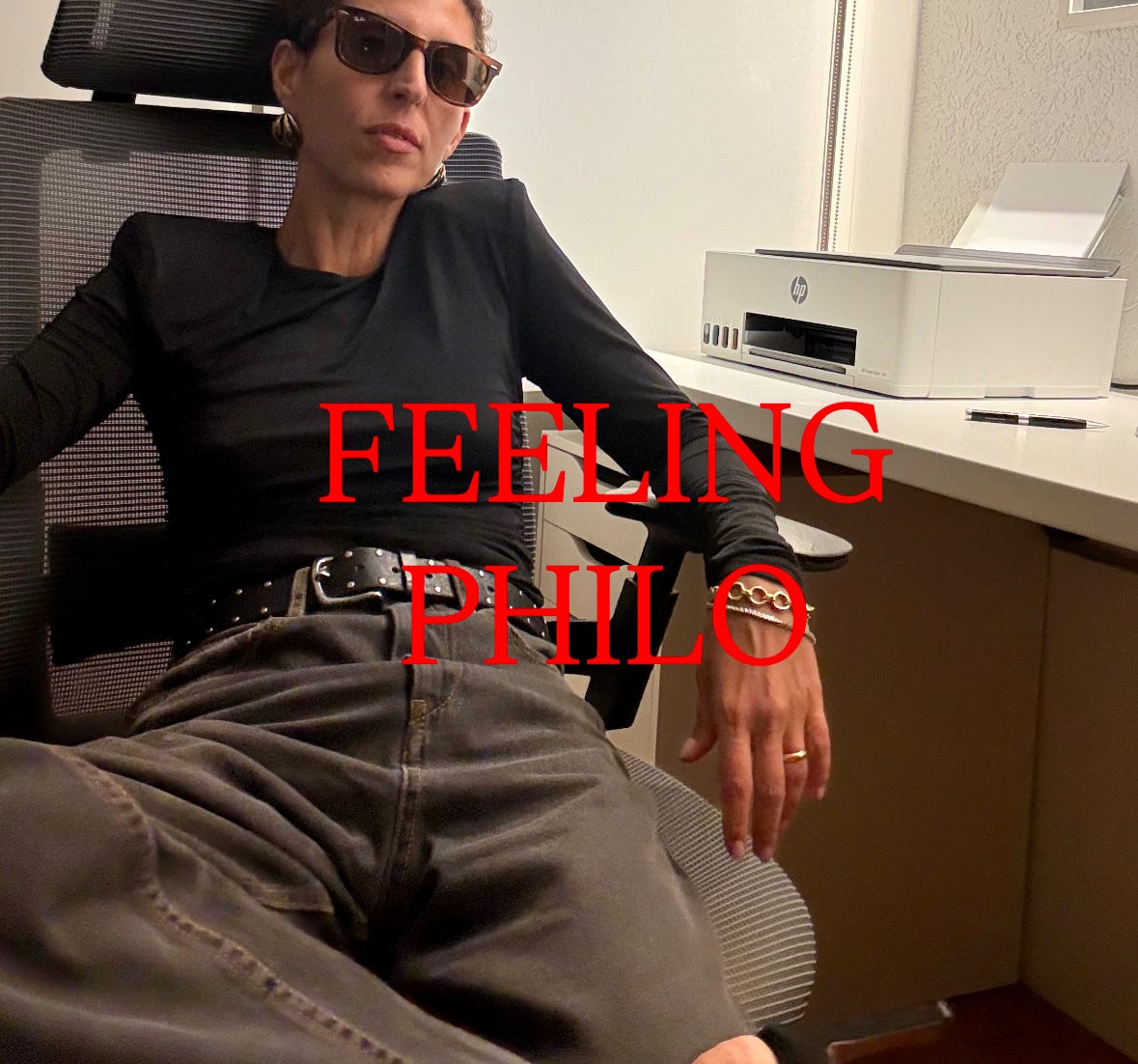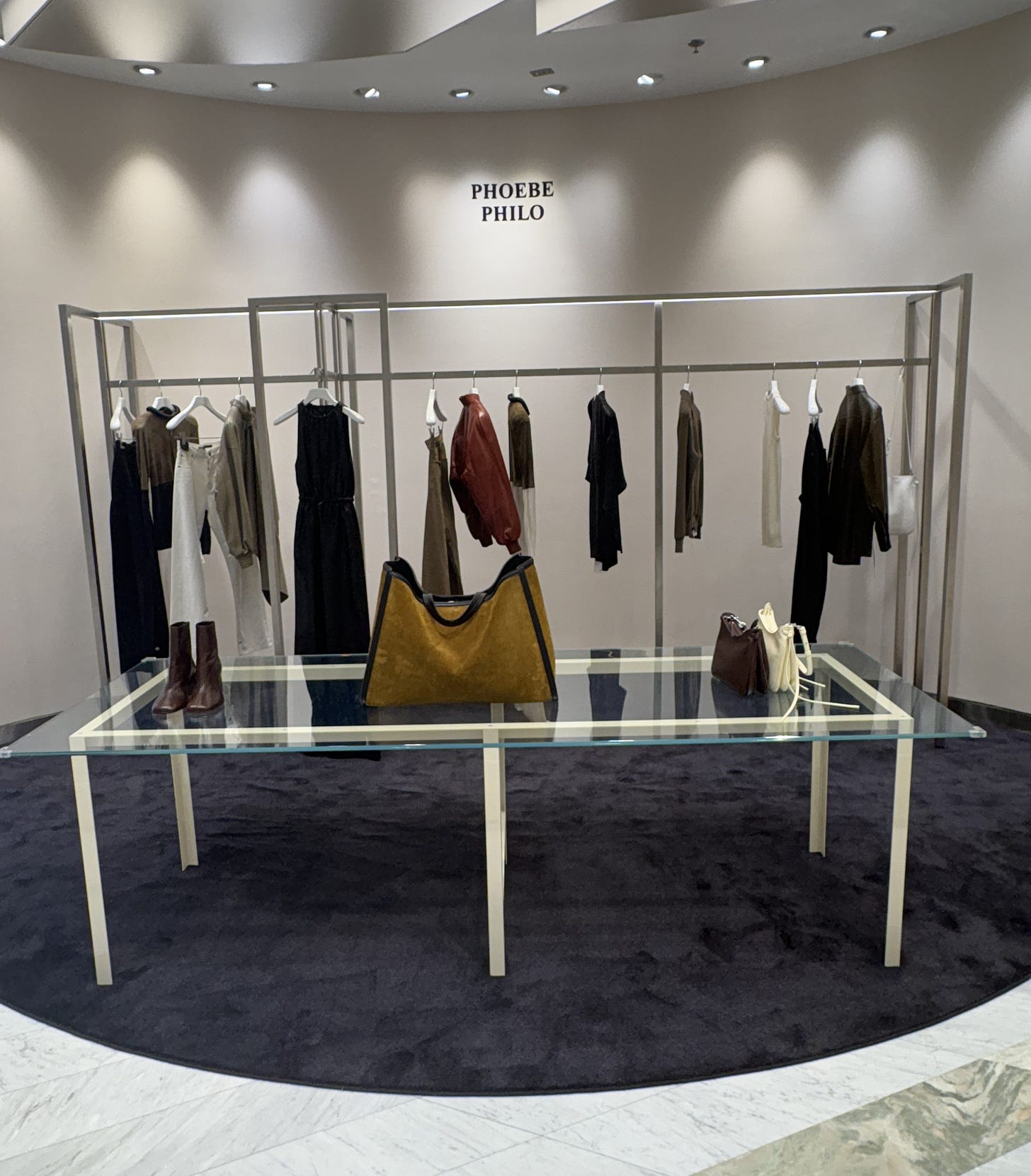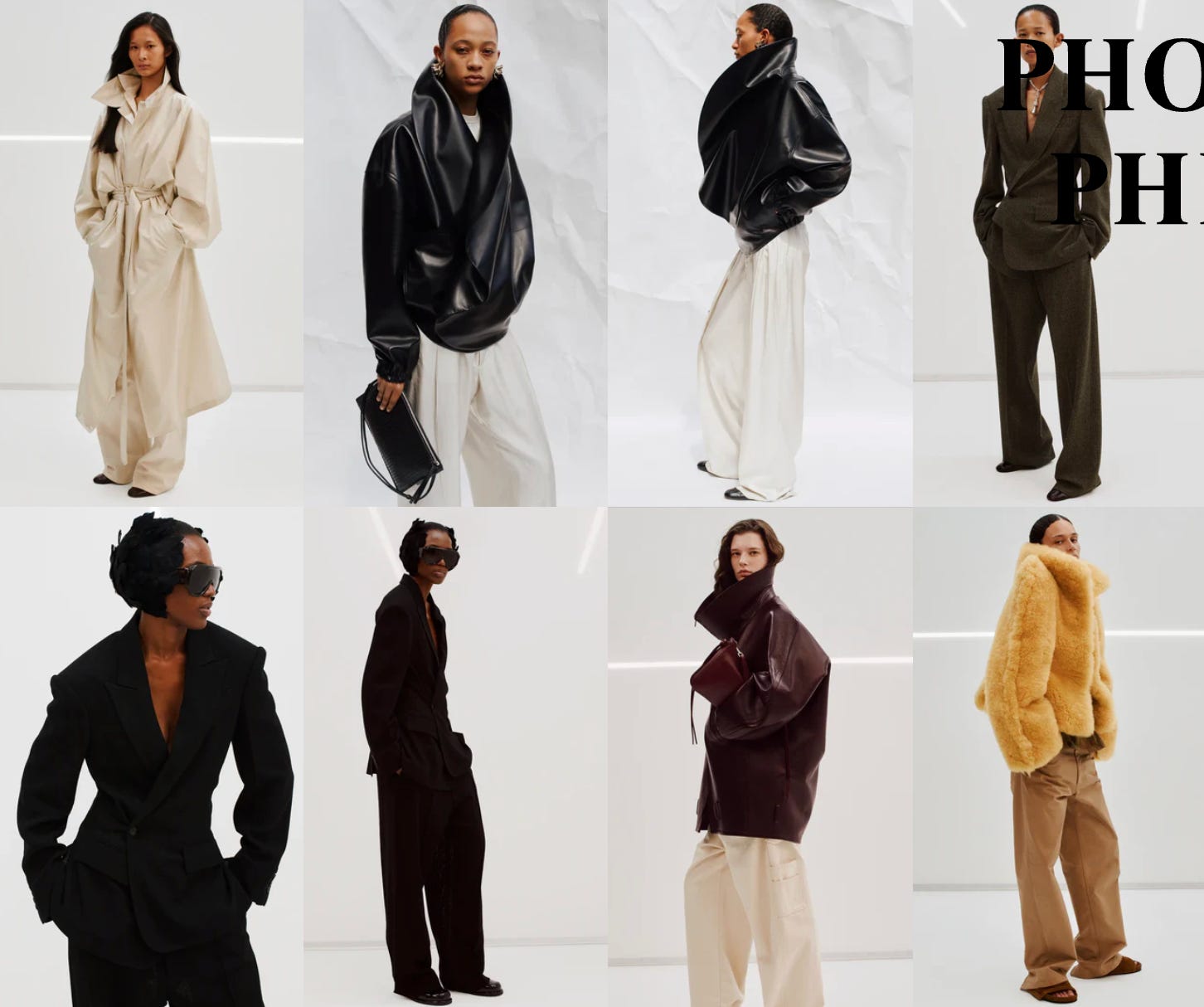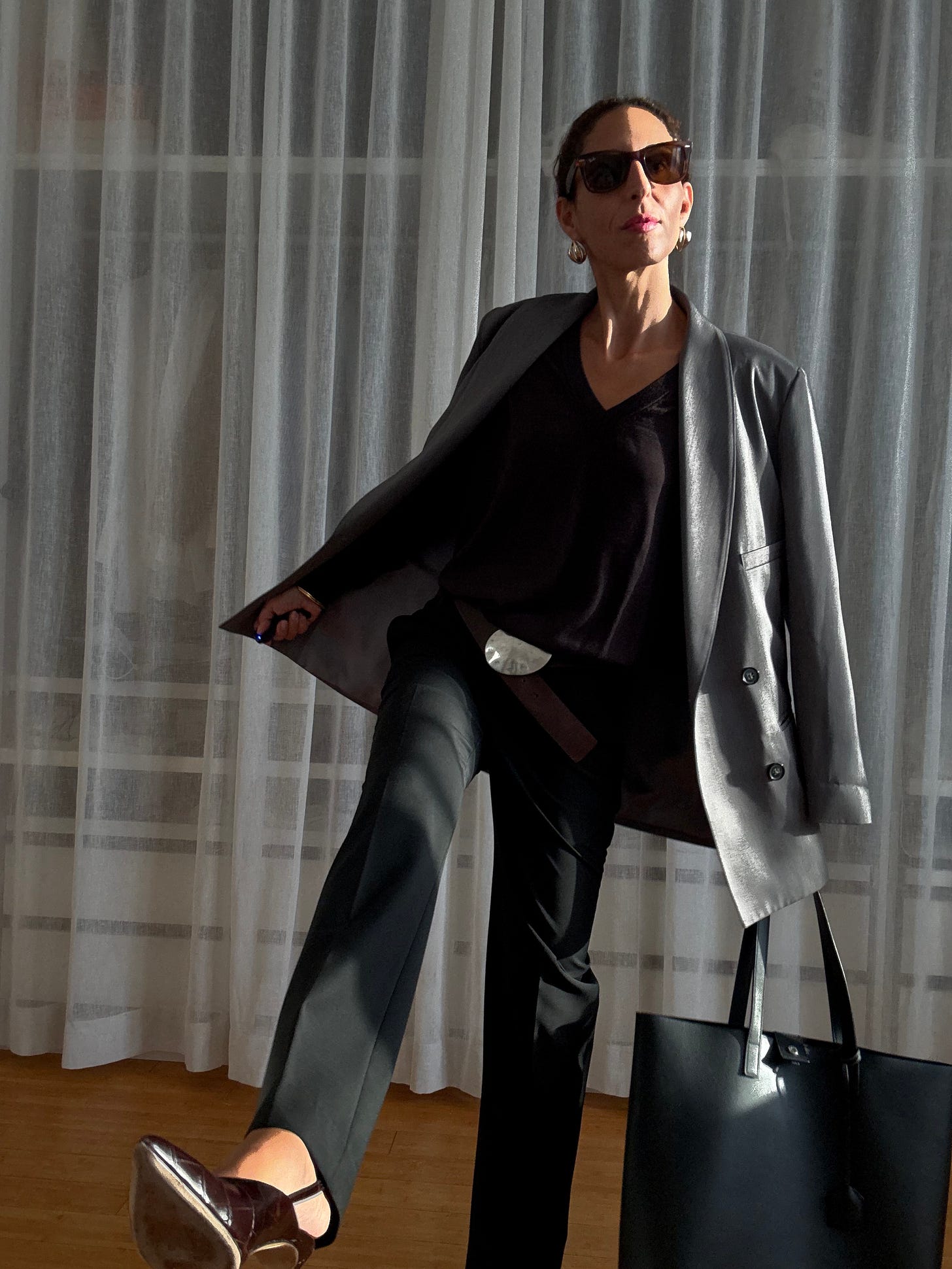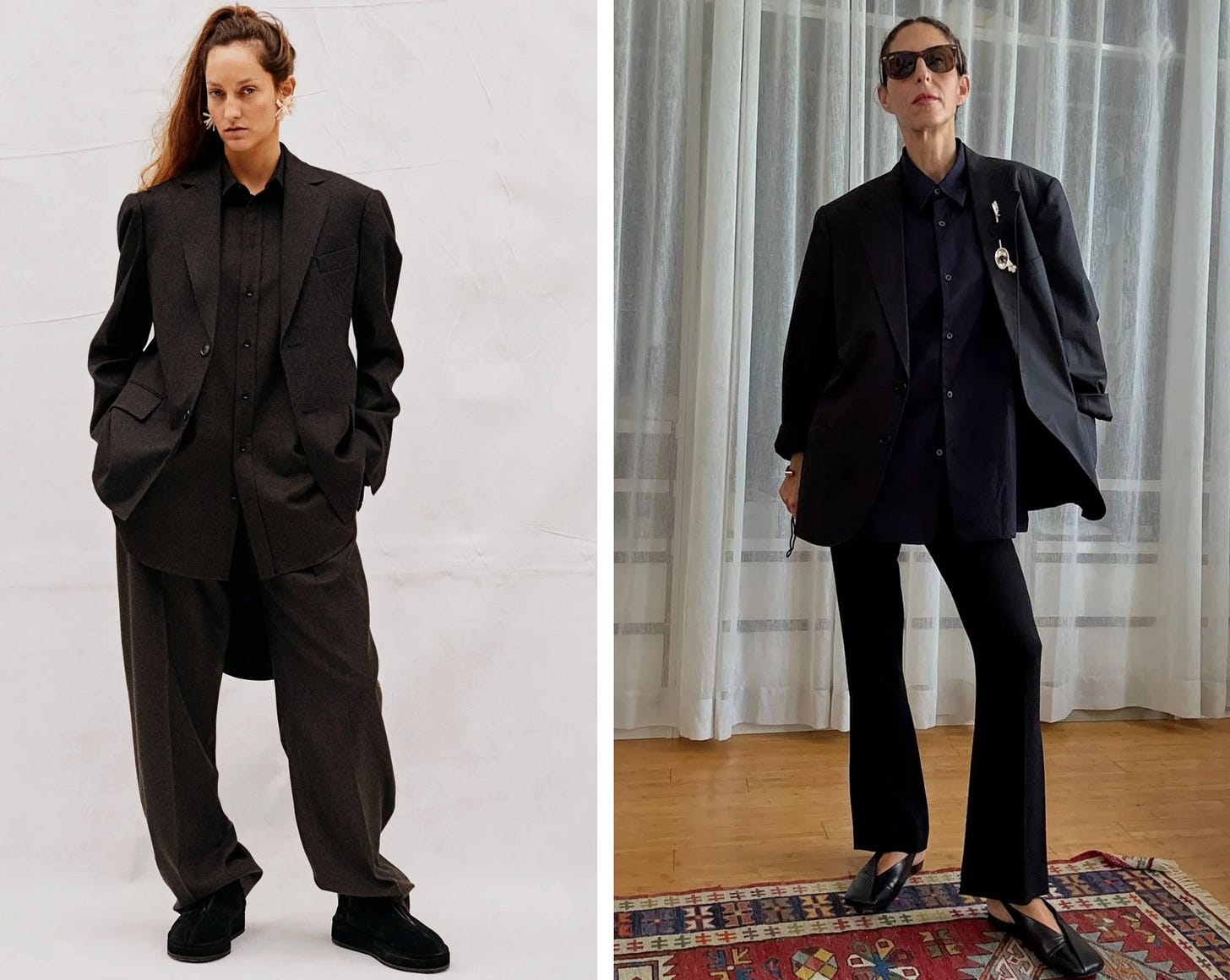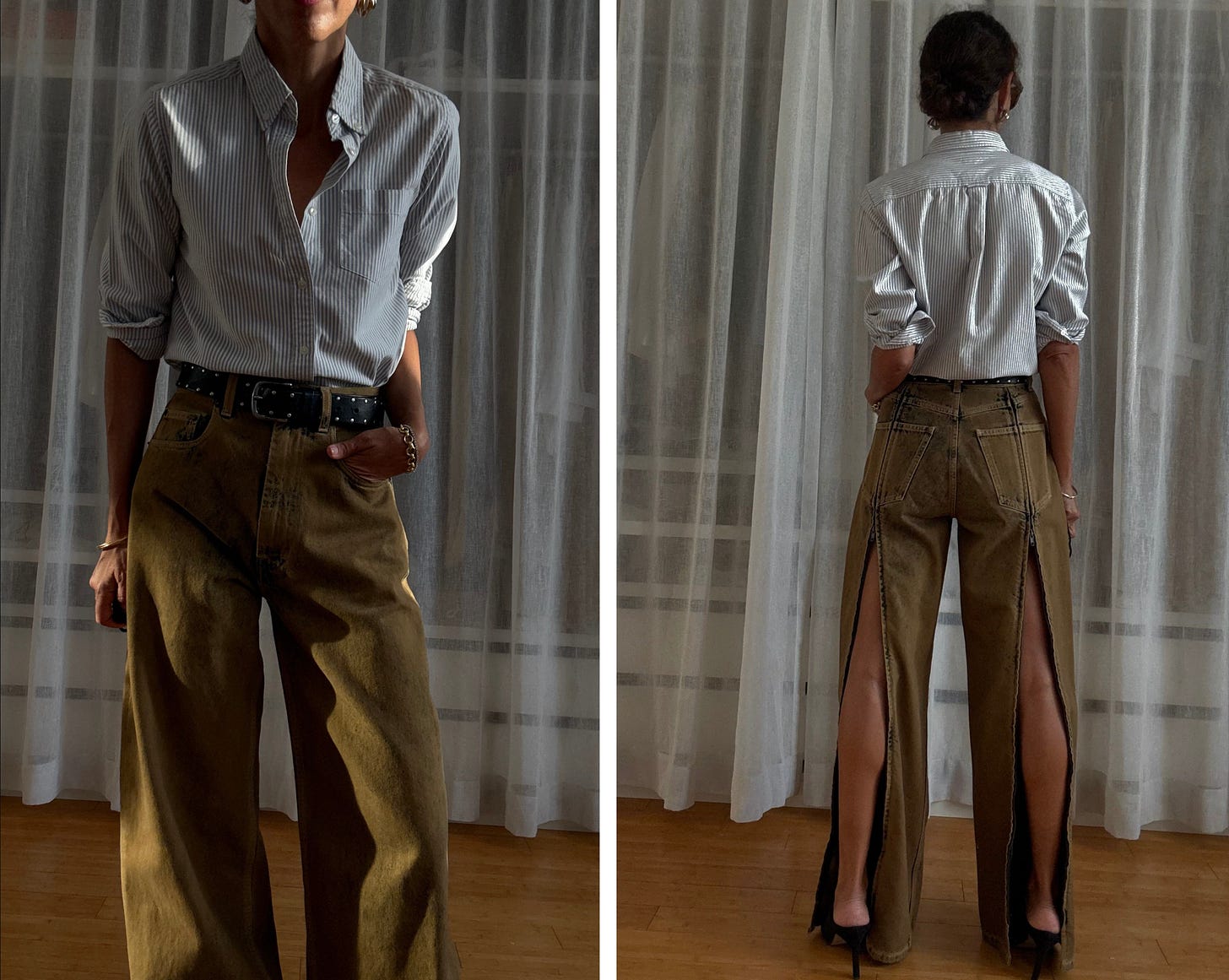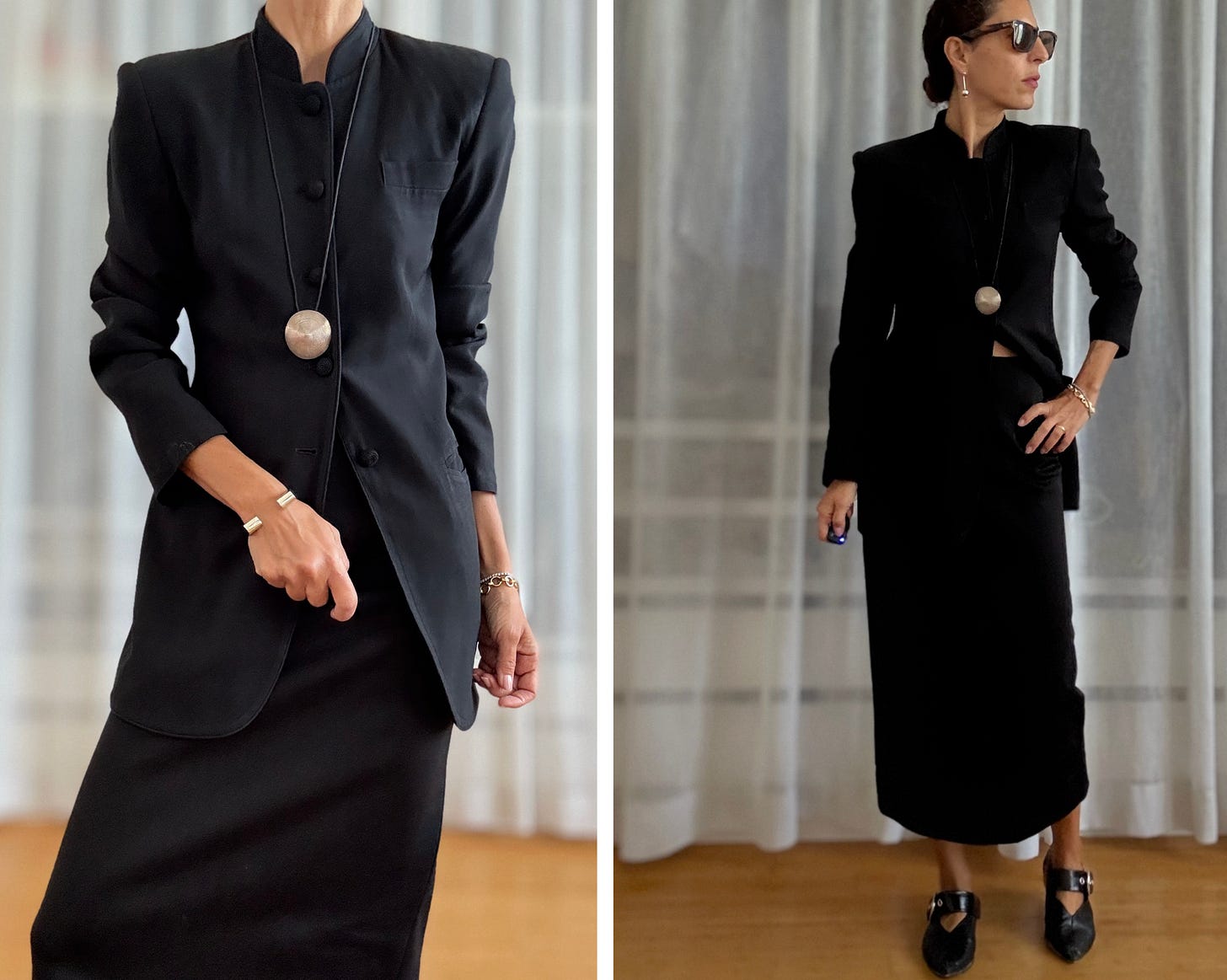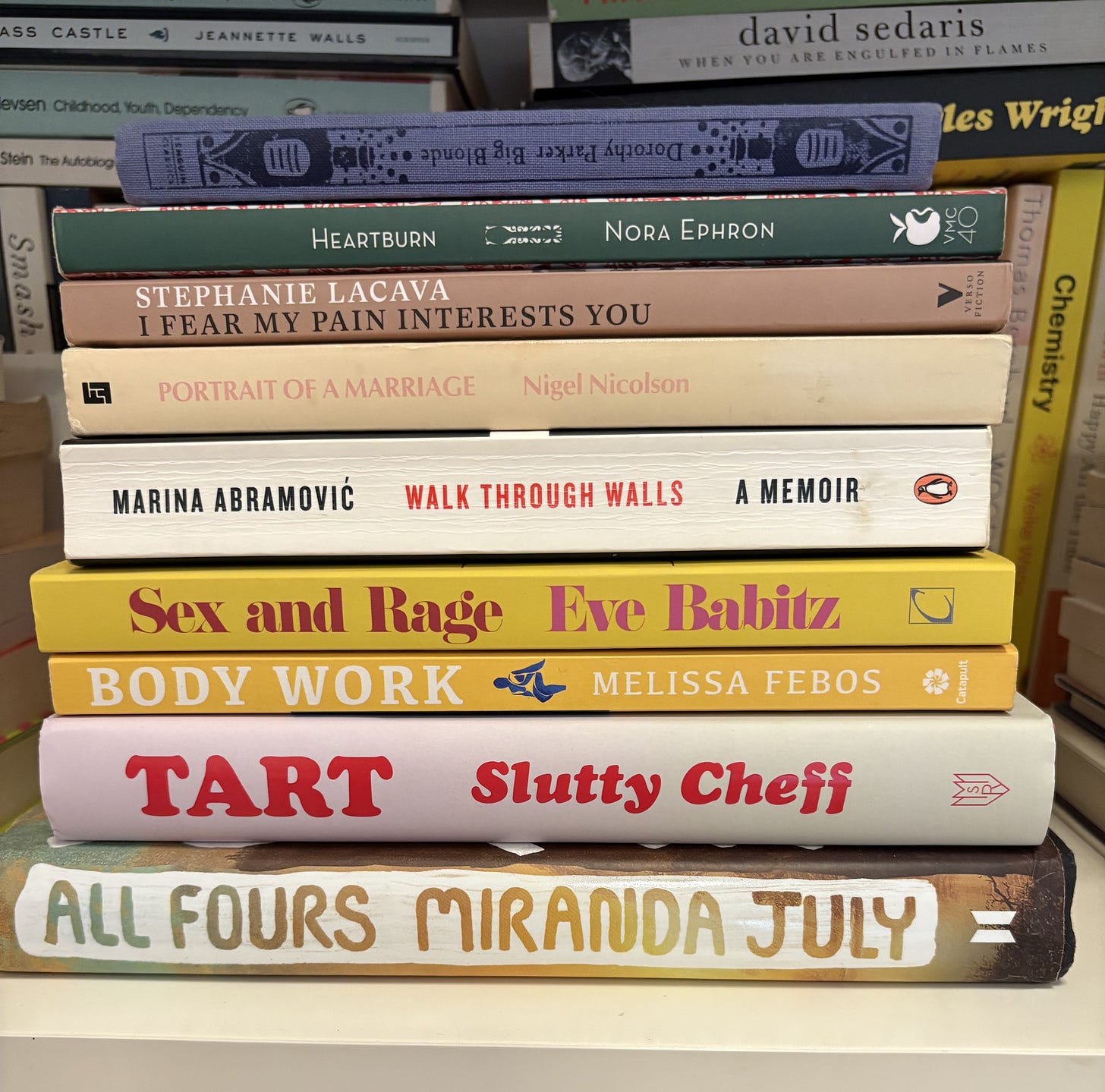Feeling Philo
Phoebe’s Psychological Playbook – A Guiding Force To Getting Dressed
Phoebe Philo recently dropped Collection C at Harvey Nichols in Mall of the Emirates. This is a big deal. Given how scarce and fiercely selective her retail expansions are, I was surprised it landed here. I scurried over post-Lagree, palpitating with excitement, as any self-respecting Philophile would.
The edit is meagre in its scarcity, even for a minimalist. Perhaps the buyers were wary. Perhaps that was the point. Either way, I was relieved. To the undevoted eye, it looked unappealing. Gated, protected. At least for now, safe from the onslaught of influencers and TikTokers who would reduce it to paltry taste.
Phoebe Philo, whose clothes are singular, bitchy and angular beyond reproach, doesn’t care if you don’t get it.
She’s not going to sell you a story to make you feel better about the size of your ass, or the price of her jeans. She’s said before that “storytelling is an excuse for poorly made clothes,” or something to that effect. The point is, if you’re rich enough, successful enough, strong enough - and yes, old enough - you don’t need convincing.
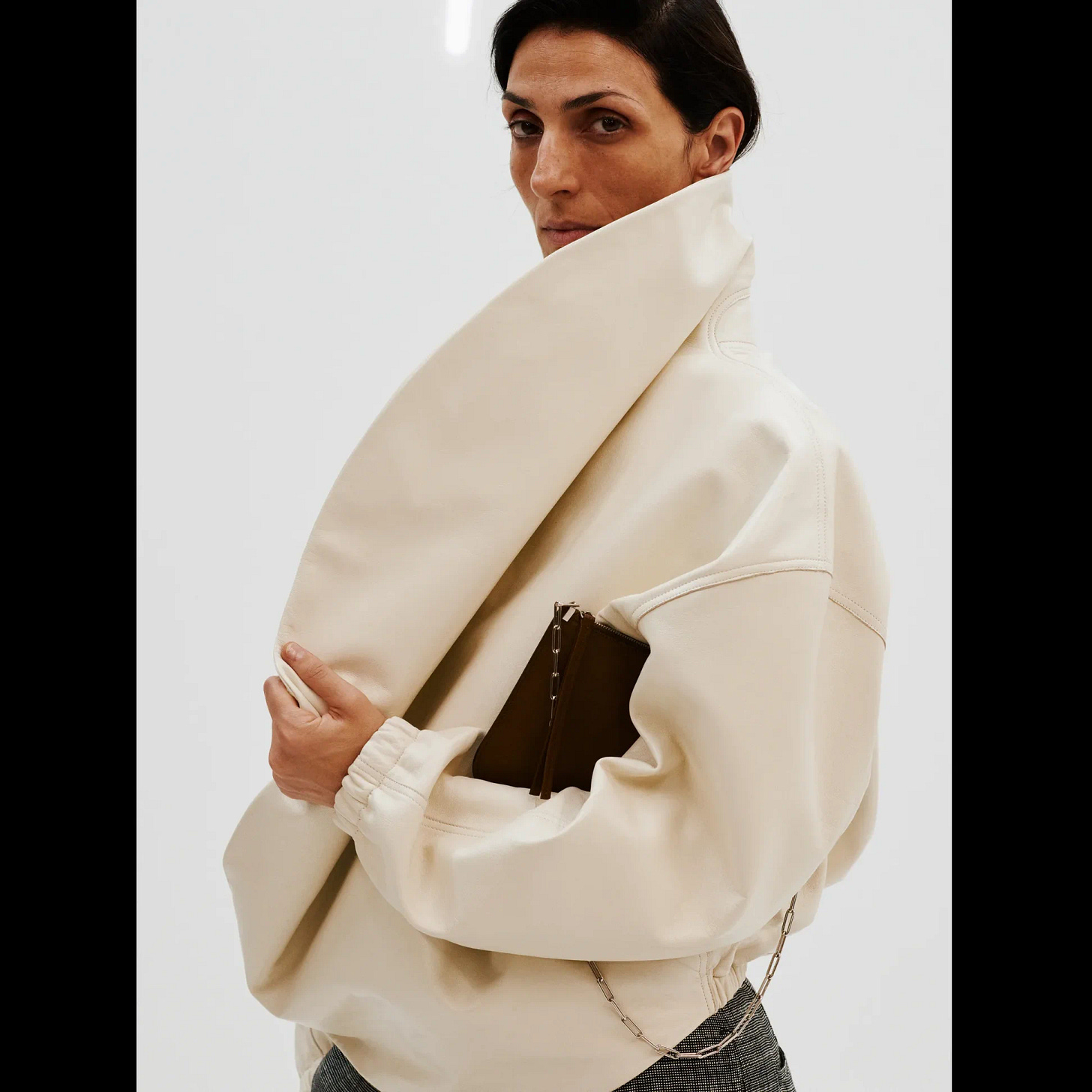
Let’s rewind a little. Phoebe’s Céline was the first brand that made me think differently about how I got dressed, or even approached getting dressed. Proportions, color, intellectual curiosity. The push / pull of oddness, frayed and unpolished edges, bell sleeves and puddle pants. Cowbells on shoes and the seduction of the anti-sex heel. It was a novel, befuddled language for women to decode, a little like flirting in Dutch. Awkward, untill tongues loosen and things heat up.
I admire women who navigate on their own terms. Who refuse to be confined by how the industry or society deem they should be. And who do so intelligently, experimentally. Phoebe, a mother of three, wife to the equally acerbic art dealer Max Wigram - is feline, private, with a rich interior life we know nothing about.
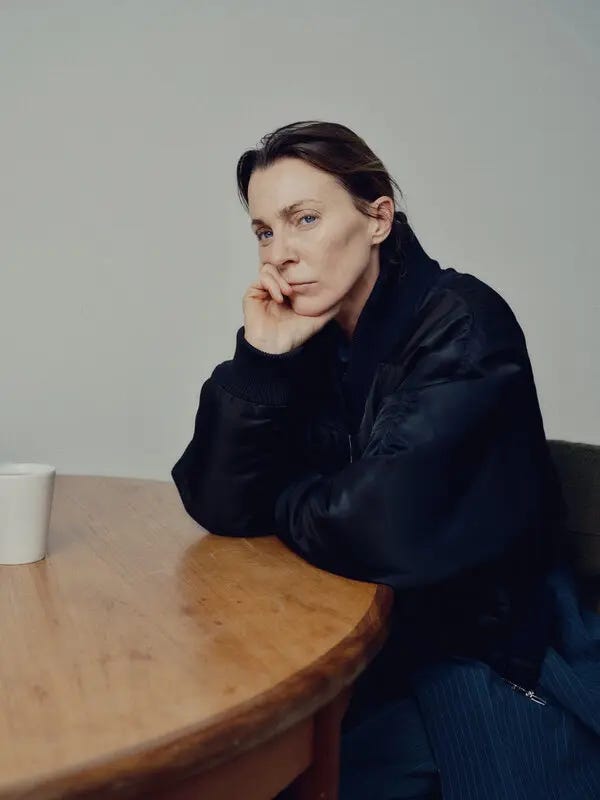
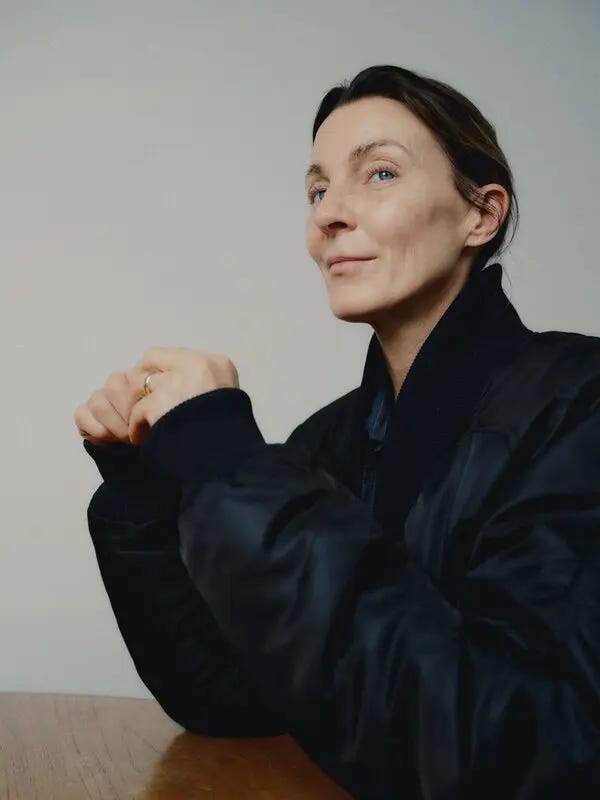
So little is shared, and so we project. We build Phoebe the recluse, the designer who shuns her peers and the press alike, onto the sylphlike, archetypal women of her campaigns. Mildly irritated, vaguely superior, she can’t stand you and is frankly sick of the derivative mediocrity being served to her. She would rather just do it herself. Best to get out of her way.
That haughty froideur is a perfect foil for office dressing which, incidentally, is my favorite way to show up in the world. I probably pursued an office job just so I could dress up for work. Boardroom blazers, tailored suits, grown-up trousers, pumps and crisp un-buttoned shirts. It’s a delicious stomping ground that can leave you delirious with power, or, in limp hands, a bit of a douche.
So it felt only natural that, when it came to writing about my penchant for office wear, I’d look to her Philoness to summon inspiration on how to dress like the high-caliber bitch you are.
What I didn’t antipicate was that this exercise would trigger a psychological meltdown tethered more closely to my notions of womanhood and maturity - so acutely, in fact, that I am now compelled to take you, dear reader, down this rabbit hole of attenuated personal style. How fun for me!
The Phoebe Psychological Playbook
Ok, this is ambitious, but I am going to attempt to break this down according to some of the Phoebe codes that serve as thematic builing blocks, for the wardrobe and, invariably, the soul. Many, like a well balanced meal, share overlapping components, yet with one overriding ingredient as its anchor. I think this will make sense once the themes unfold, so lets get started.
1. Strength That Assumes Maturity
A great deal of Phoebe’s oeuvre is centered around massive shoulders and the quiet mania of looking completely unbothered. If you’ve followed me long enough, you’ll know the valour I attribute to a well-defined blazer for holding things together when you’re falling apart. Some call it overbearing, I see it as a coping mechanism.
Phoebe’s jackets, and the shoulders heaved on, are generous in quality, in scale and in spirit. They’re opulent, flagrantly ostentatatious, yet appear utterly effortless on her protagonists. That’s the thing, the grandeur works because it’s tempered by gravitas, by a certain lived-in maturity. There’s an emotional architecture required to bear the burden of such sizable shoulders, figuratively speaking.
These clothes demand experience. They wouldn’t carry their weight, or their meaning, on someone too young. To borrow from another ice queen, their centre would not hold.
That’s not to say a hulking shoulder is banned from the youthful narrative, that would be ridiculous. But these are serious clothes, with serious price points. Their exactitude lands most convicingly as soft armour on a woman who’s earned it. A deliberate depiction of the female identity as it enters and endures the workforce, the complications of marriage, motherhood, feudal friendships and the thrill of living extraordinarily. Bristling against coyness, resisting frailty, assuming power in being all buttoned up. God, I love a good blazer.
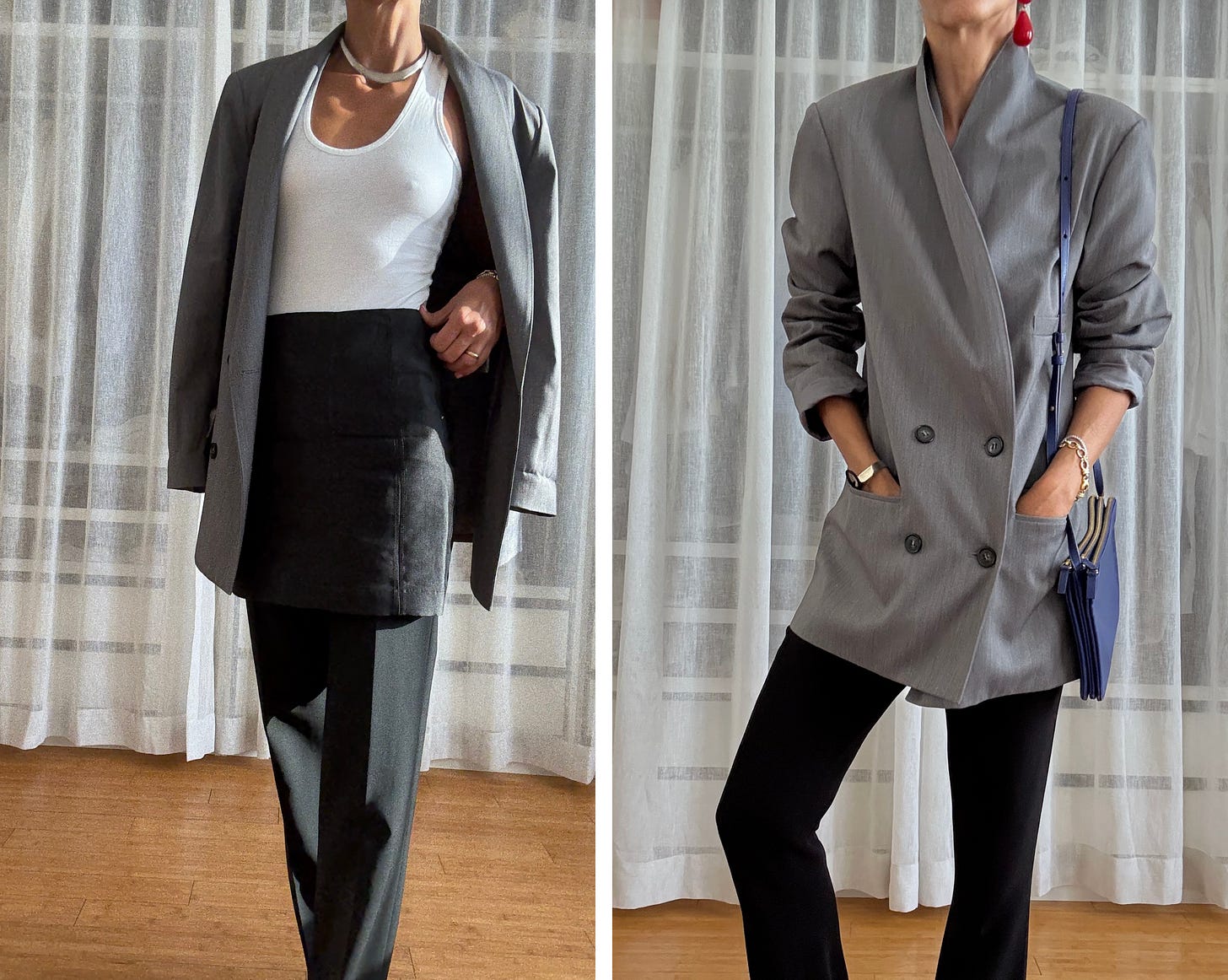
Here are some alternative seductive blazers to whet your appetite: Try this, or happily kick around in this. Here’s an oldcéline that has no right to still be here. I should not have to explain this either.
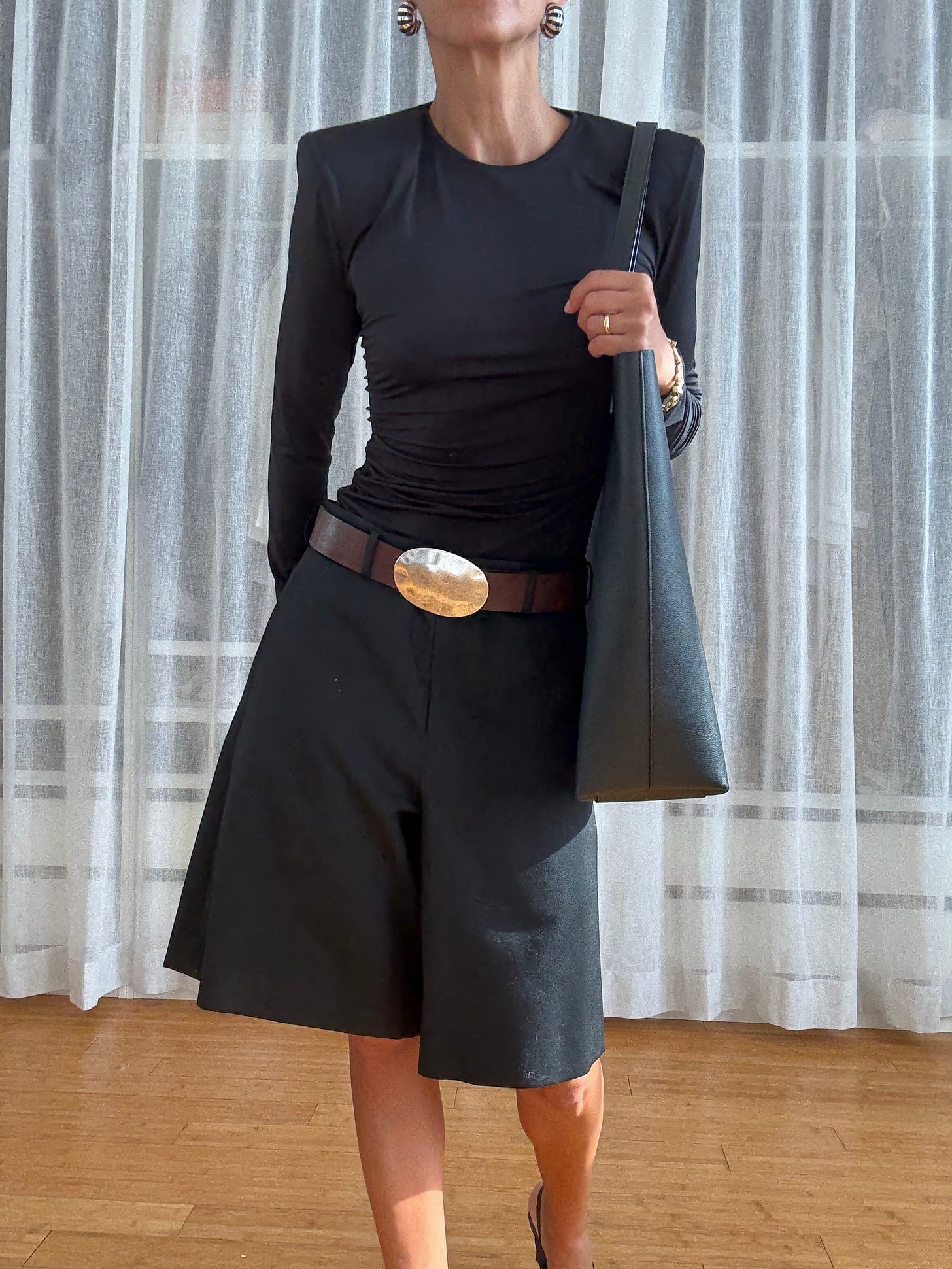
There’s a strain of reserve to the current PP vernacular, less capricious than her Céline days, but no less agenda-defining. One wouldn’t dare call them plain or straightforward, but there is an element of directness to them that startles. With nothing cute or coy to waffle behind - its adult. A pencil skirt and a chaste top. Long limb-lengthening trousers, a covered up shirt. Expansive and demanding, like the women who inhabit them.
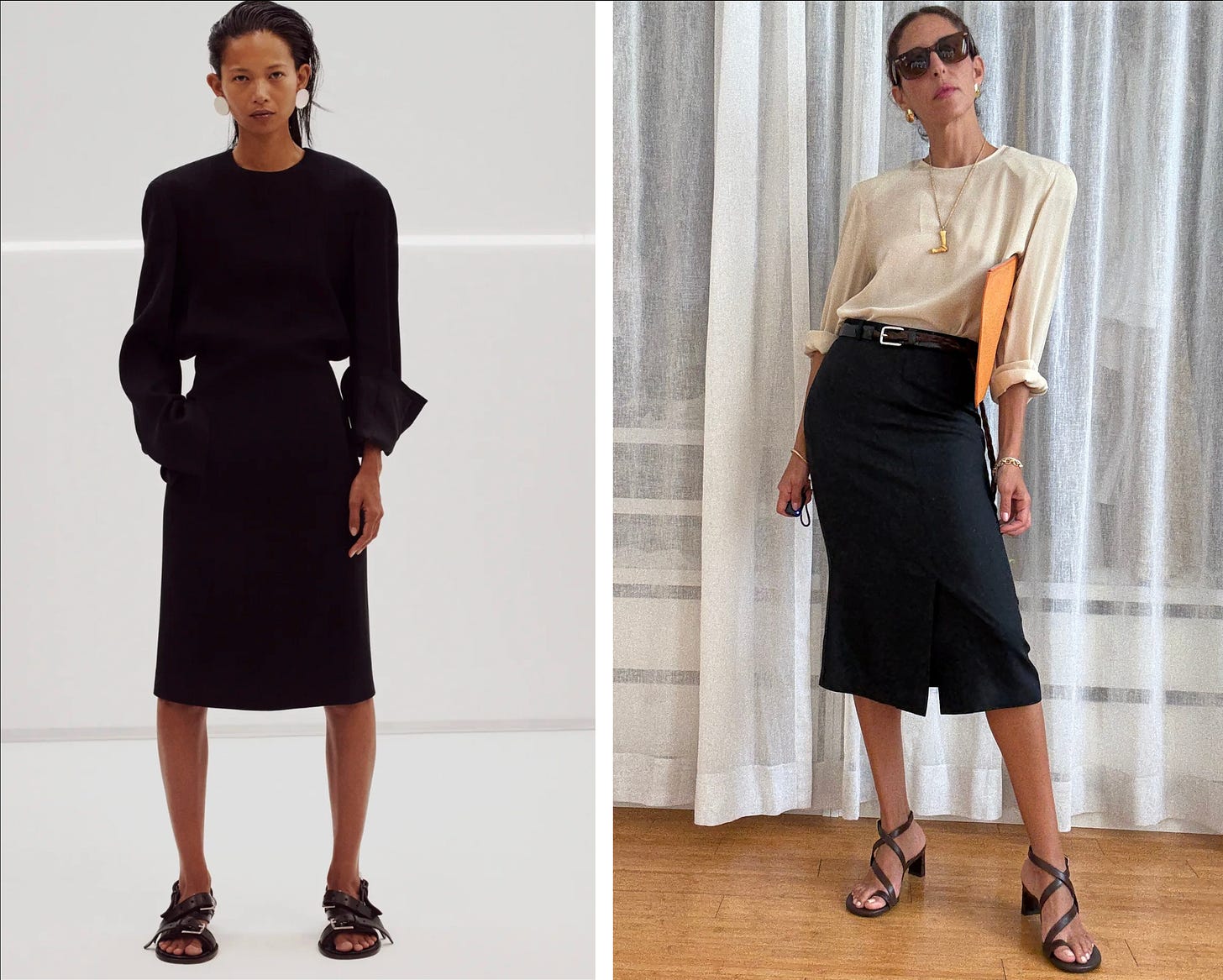
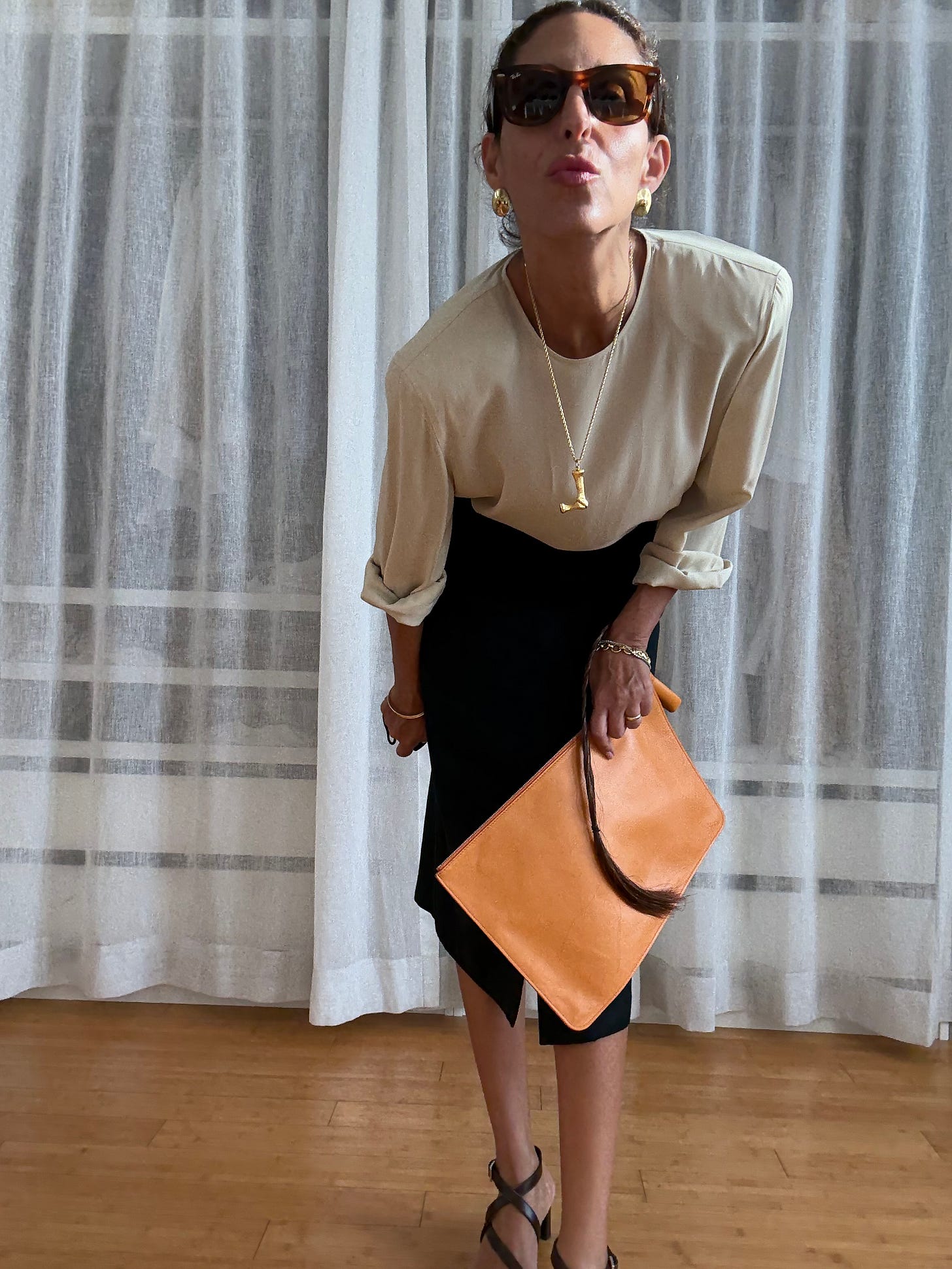
2. Angular Masculinity
I don’t know about you, but I find women in suits (not ties - that’s a costumey pet peeve of mine that only the late, great Diane Keaton could pull off) profoundly sexy. Ditto for short hair on hot girls. There’s something about that inflection point, the contrast of attributes deemed masculine, that when worn by a woman, channels more latent sexual energy than any frilly dress or flowing hair ever could. (I also have reservations about loose hair for evenings - always tied, the latter looks common).
Maybe it’s a subversion. Or maybe I’m still too deeply imprinted by Kim Basinger’s suit antics in 9½ Weeks to see straight. In either case, Philo’s tailoring carves a jagged expression of femininty, a cautionary tale of contradictions. Strict when needed, but then catching you off guard with a smutty joke and a cigarette.

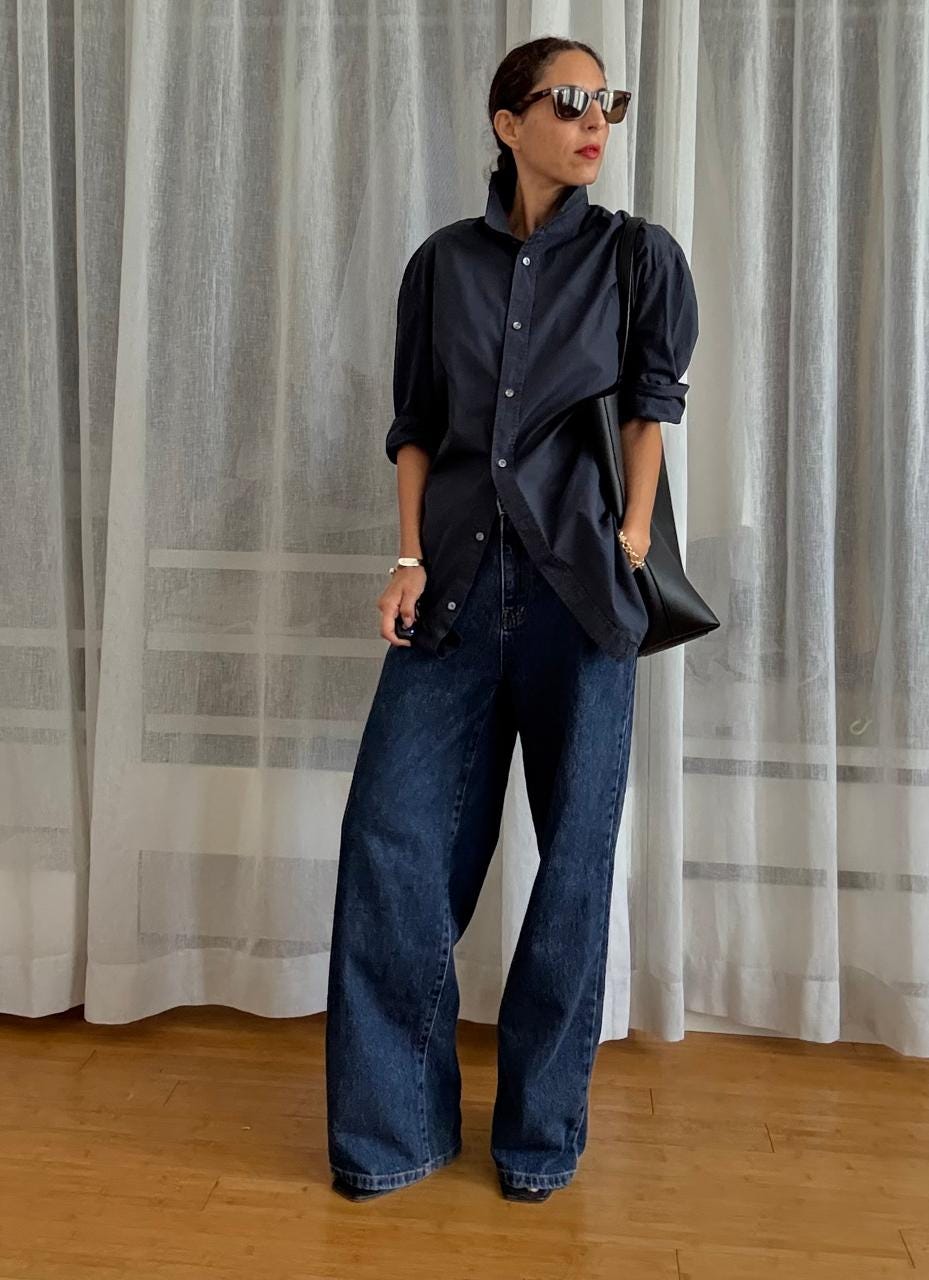
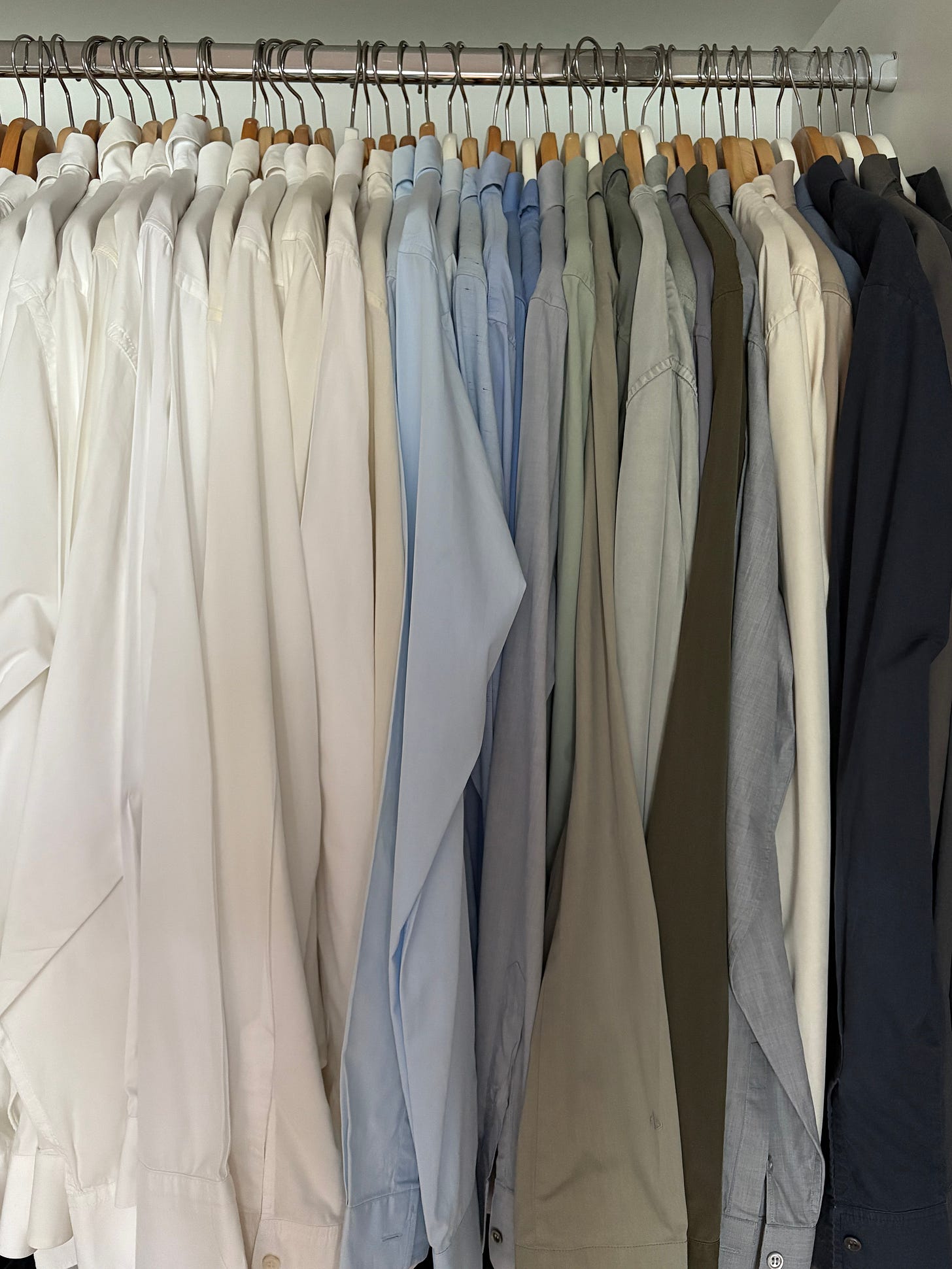
3. The Identity Defiling Pants
No doubt, these acid wash Phoebe Philo denim pants are the most treasured item in my wardrobe. The one piece that makes me feel like my most significant #HotBossBitch self. They were the only thing I truly coveted when the collection first dropped, but wasn’t sure about the fit and held off buying them online. Then, on a trip to DSM in Paris, there they were - waiting for me. The last pair in my size. I paid full price and never felt better.
Top Tip: Buy the pant that makes you feel this good. Those zippers running down the back are downright perverse. You won’t need anything more than a shirt, or even a t-shirt to conquer the world, let alone nail a meeting.

Phoebe Philo, is after all, a pants girl. Her tenure at Chloé was devoted to the noble pursuit of making butt-flattering trousers. Now, she doesn’t need to try that hard. I was listening to stylist Sarah de Mavaleix on Fashion People talk about how commanding she felt, all five-foot-two of her, reverberating with her most potent self in them. That, truly, is the irrefutable power of getting into Phoebe’s pants.
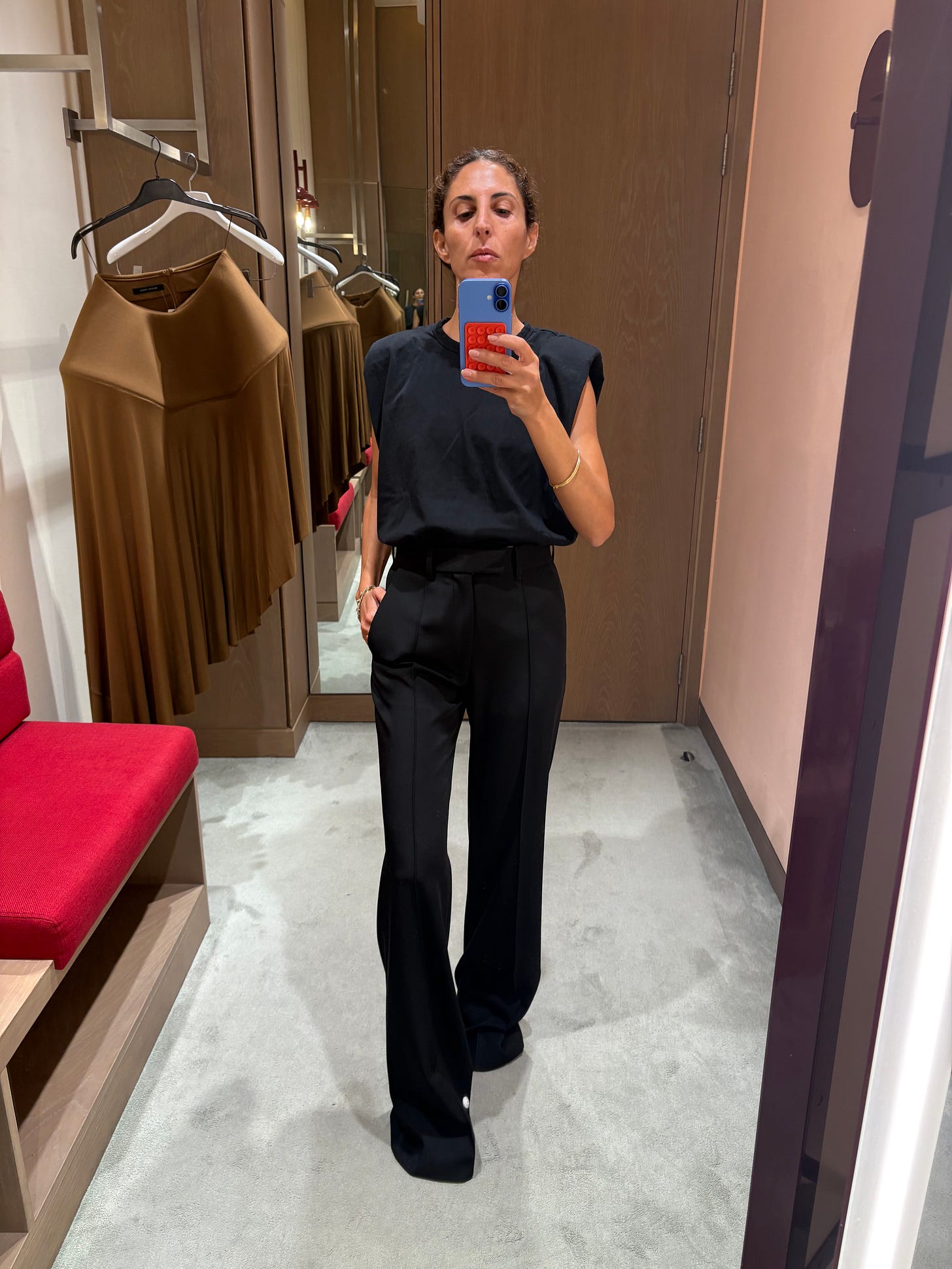
4. The Austerity Instinct
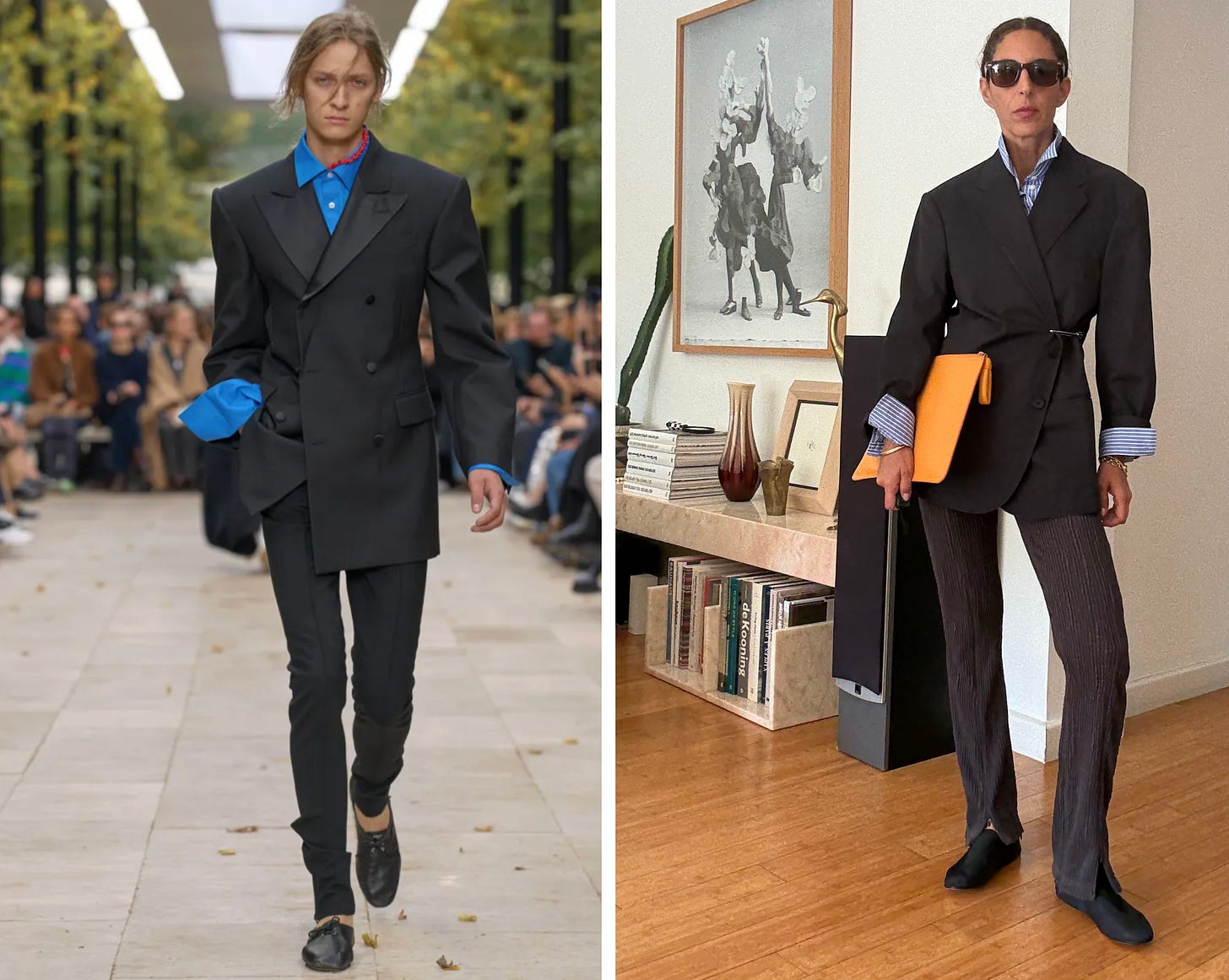
So this look is inspired by Micheal Ryder’s fantastic new Celine. Ryder has an imp-like quality that makes you want to tuck him under your arm and smother him with kisses. Yes, he’s that cute, so he can get away with a lot. But! He’s managed to navigate a narrative between Phoebe’s fêted Céline and the dregs of Hedi’s infantile skinniness with a discourse that’s entirely his own. Its a lighter touch - more youthful, looser, the sassy overperforming intern to Phoebe’s bitchy boss. Top 5 “debut” shows of what was the Game of Thrones fashion finale.
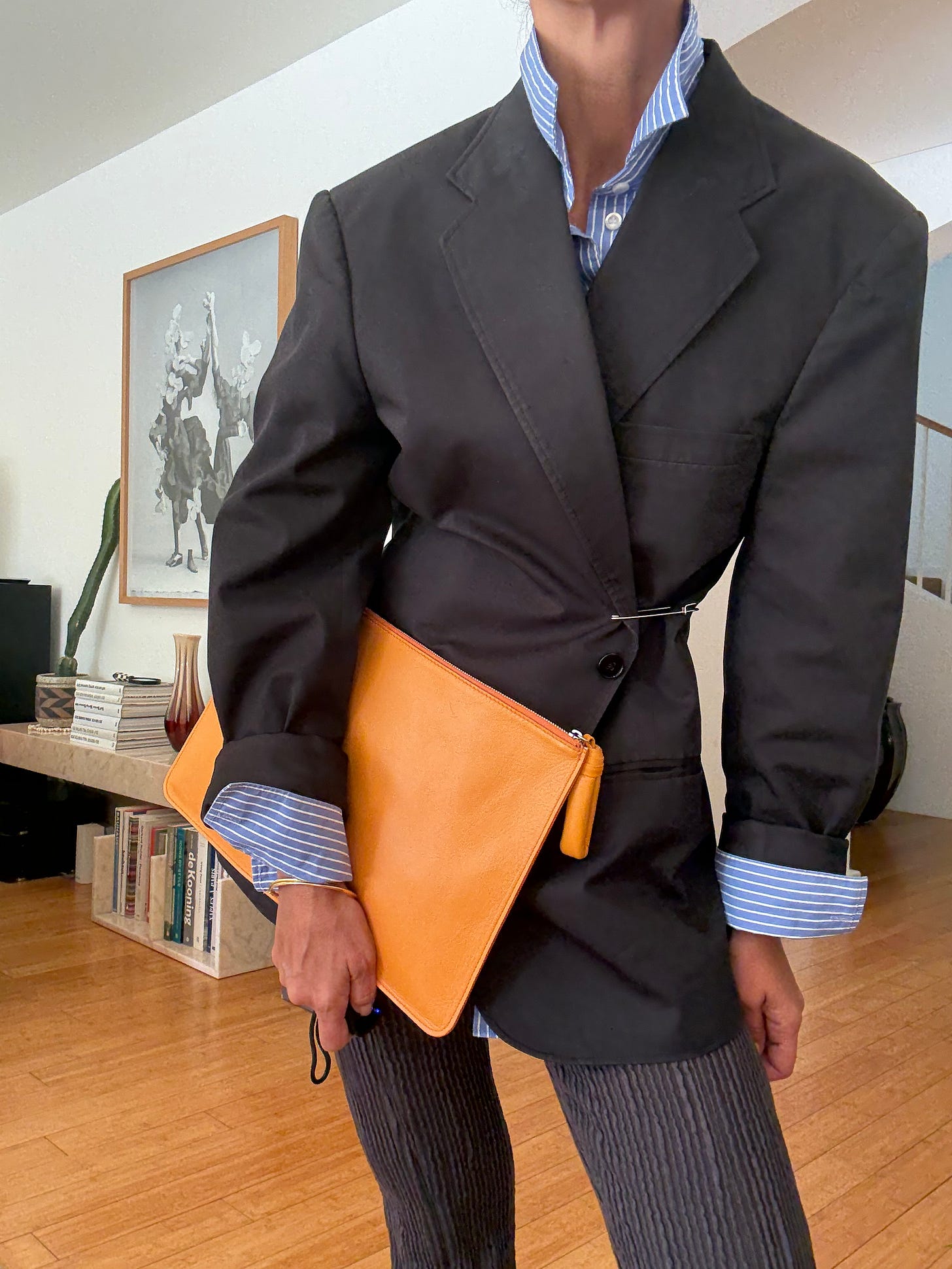
Phoebe’s current collections, on the otherhand, have tightened up, gotten a little more austere, even severe. She’s cast aside anything as frivolous as colour, replacing it with volumes, not only in scale, but in singularity. Borderline ascetic, her clothes can often be challenging, save for a sliver of premeditated skin, a welcome release to her sometimes punitive strictness. But I rather enjoy this reprimand. It forces you to reconsider your feminine wiles, not from an angle of exhibition, but in the assertion of self confidence.
Damn, if that’s not hotter than any bared midriff, even by my facetious standards.
5. A Seduction of Indifference
Meanwhile, out in the wild, fashion critics are losing their minds over whether designers secretly ‘hate’ women, a spectacle that makes Philo’s quiet menace feel maternal. Both Vanessa Friedman and Stella Bugbee at the New York Times, among countless others, have spewed vitriol condemming some of the condesending suggestions sent down the recent S/S 2026 runways. I’m not particulary ruffled by it; I don’t think the intent was to belabour women. Rather, it seemed to me that many of the designers, addmittedly men - were simply thirsty for attention and out of ideas, projecting insecurity rather than spite.
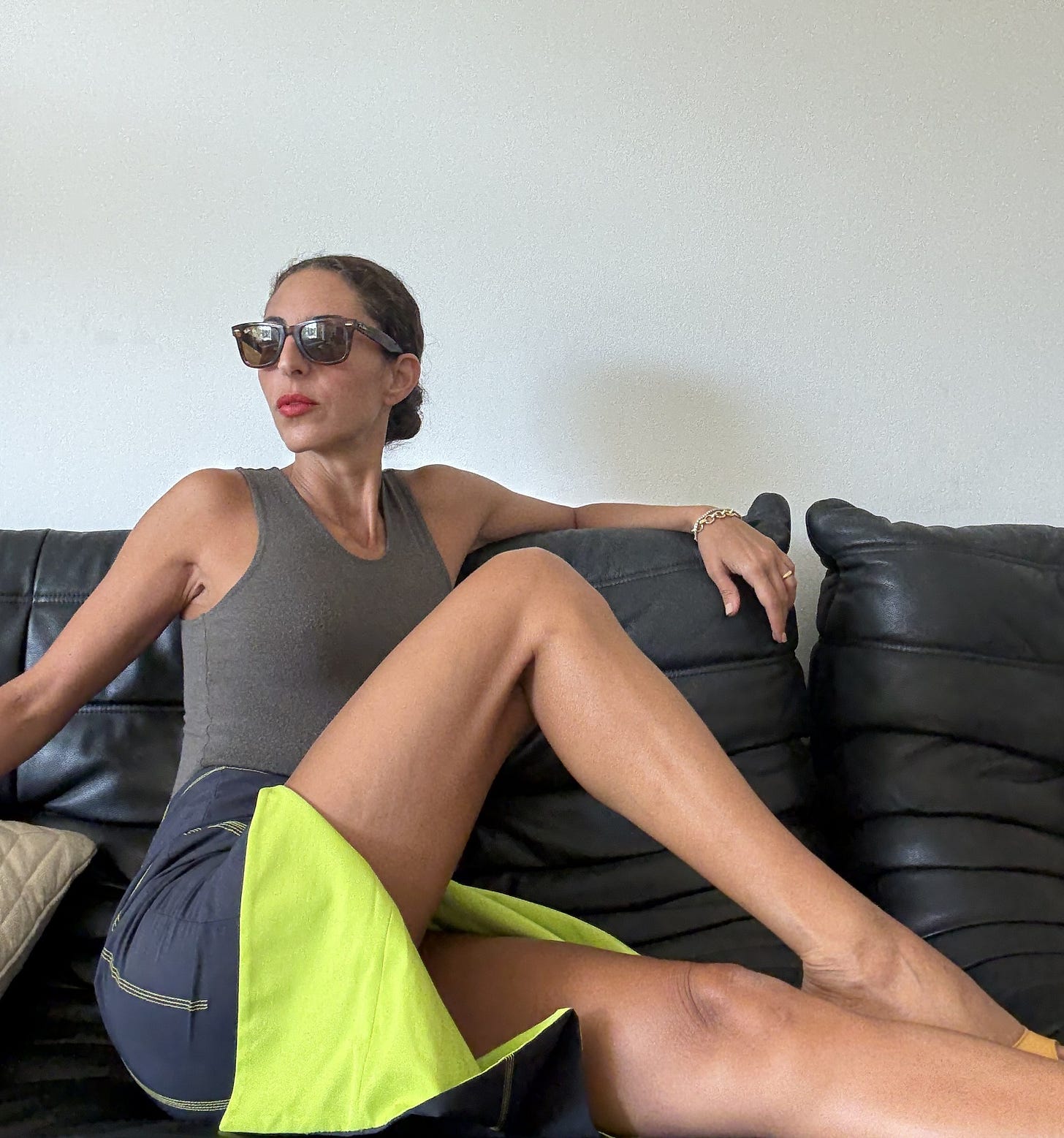

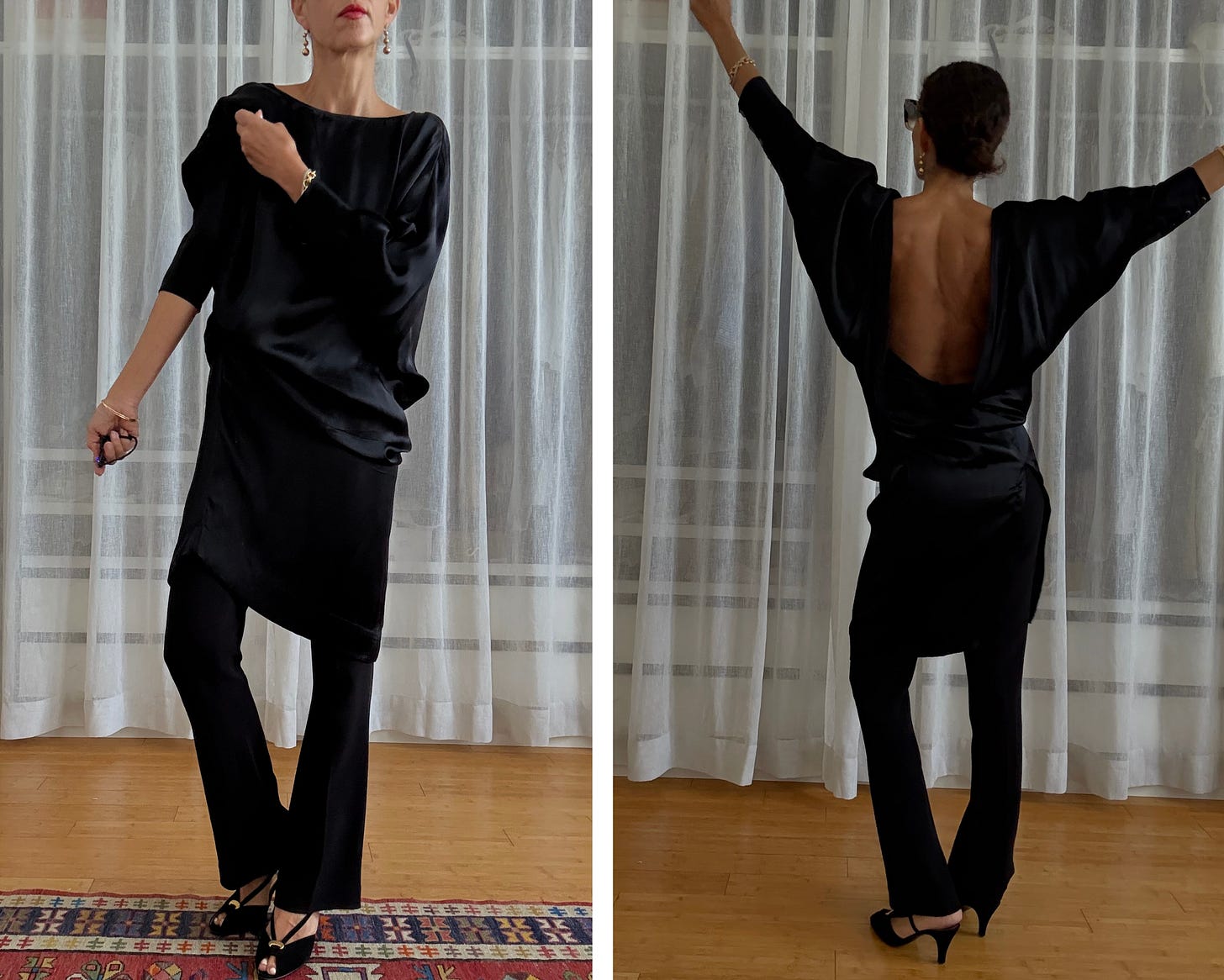
Phoebe, in contrast, is a designer with a serious grasp of womanhood who just gets it. Not simply because she’s a woman - plenty of female designers stumble over their own ambitions, confiscating their audience in the process - but because her secret sauce lies in deflection as much as attraction.
As covered up, directional and bitch-boss serious as her brand may be, there’s always a curveball of seduction, delivered offhand, in private, utterly disinterested in the validation of the outside viewer.
These are clothes whose greatest merit comes from the approval you pass on to yourself. Fuck, that’s power!
Stay sexy,
L.
Good Reads
I love Prada even when I don’t. Grace Gordon’s critique for Savoir Flair is so smart and revealing, she even managed to integrate Roland Barthes into it! I’m still reeling.
Like most moms of teenage spawn, I find Gen Z discombobulating. But I don’t let them know that. After School, Casey Lewis’s youth culture newsletter, keeps me in the loop on everything my kids don’t want me to know about.
A friend of mind asked me recently for a book recco that’s sexy, fun and fiesty. So here are nine!
All Fours, Miranda July. If you haven’t read this already, where have you been and man, are you up for a treat. Its polarizing, some hated it, but I’m not friends with those type of people anyway.
Tart, Slutty Cheff. Haven’t read it, but it promises to be full of promiscuity, prosciutto and all the antics of seedy kitchens in a big city.
Body Work, Melissa Febos. So this isn’t light or fun per say - but its a sharp and scathing account on the emotional and psychogical work of writing. Reading it will make you better.
Sex & Rage, Eve Babitz. I’m a big Babitz fan. This isn’t her strongest, but its fiery enough to feed the itch.
Walk Through Walls, Marina Abramović. Best enjoyed by watching YouTube videos of the performances in tandem to reading about them for a DIY immersive experience. Then sit back, feeling small and inadequate afterwards.
Portait of a Marriage, Nigel Nicolson. Biography about the unconventional marriage of Vita Sackville-West and her husband Harold Nicolson, as recounted by their son. Vita, a friend of Virginia Woolf, was a novelist and poet, who carried out various female romantic relationships. This book has all the machinations of scandal, morality and love, interwined.
I Fear My Pain Interests You, Stephanie LaCava. Acerbic, odd and distant, LaCava’s prose sounds how I imagine a pair of Phoebe Philo suits would speak - slightly intimidating and coolly compelling.
Heartburn, Nora Ephron. Nora is the best! A recounting of the failure of her marriage, made hilarious yet taunt with pain, in the way only Nora could.
Big Blonde, Dorothy Parker. I love female writers from the boozy roaring 20’s. Parker was known for being snarky, gossipy with merciless humour aimed at society’s upper class. She died broke and drunk. But Big Blonde, the titular hero in these short stories, is so full of heart, you will break.
Last Look: Viva Versace!



